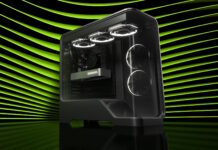With a dedicated physicsprocessor anything can get realistic consequnces. In today’s games you can often shoot an unlimited aount of times with rockets at houses without causing any harm what so ever. With correct and realistic physics the very same house would be blown up piece by piece. And if you hit a bearig wall on the first shot the entire house would fall apart on the first hit. These details that decides how the environment reacts on your and other elements actions which is of course very demanding on the hardware a dedicated circuit is just perfect for such a task. Today game developers are limited to the amount of physical aspects in games since our computers can’t handle the extra load. PhysX is here to change that and AGEIA has joined up with ASUS to manuacture expansion cards for this processor. They plan on shipping out PhysX-cards sometime during 2005, when several games supporting PhysX-technology will be launched, but so far there are no price information. We are very curious to see the advanced physics of the coming games. At the same time AGEIA has announced that its NovodeX software, for realistic physical effects, will be supported by Sony’s Playstation 3 gaming console. Which pressumably means that PS3 will let one or more of its SPE coresin its Cell-processor handle only physics to follow the guidelines of the NovodeX system. The pressrelease from ASUS and AGEIA can be found at Yahoo!.AGEIA PhysX is something we reoprted on earlier here at NH and it’s really all about a dedicated processor to handle th physics of today’s 3D-games. This dedicated processor is abbreviated PPU (Physics Processing Unit) and should be looked upon as a complement to the GPU (Graphics Processing Unit). It’s now official that ASUS will be the first manufacturer to support AGEIA’s PhysX processor. As we earlier mentioned the physic processor will make it easier to create morerealistic worlds instead of the static game worlds we are running around in now.
Subscribe
Please login to comment
0 Comments
äldsta


















